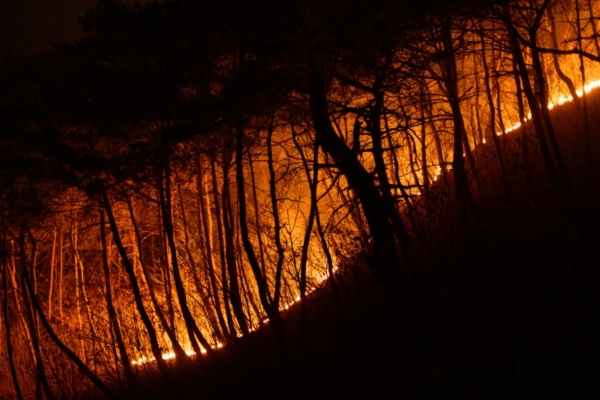South Korea’s southern region is currently experiencing one of the most severe wildfires in recent years, with a death toll of 24 people, over 300 buildings destroyed, and more than 28,800 people forced to evacuate. The fire has already consumed an area exceeding 17,700 hectares of land, making it one of the most serious wildfires in the country’s history.
Among the casualties is a pilot who lost his life when his helicopter crashed while carrying out firefighting missions in Gyeongsangbuk-do’s Gyeongsan County. Additionally, four firefighters and public officials lost their lives in ground firefighting operations. Local officials stated that most of the deceased were elderly individuals in their sixties and seventies, with at least 26 people injured.
Since the outbreak last Friday, March 21st, the fire has continued to spread. Despite efforts to contain the main fire, strong winds and dry weather conditions have caused the flames to reignite. Acting President Han Deok-soo stated that the “disaster damage continues to expand,” prompting the government to raise the alert level to the highest, initiating comprehensive emergency responses.
Observers have noted that in terms of the areas burned, this ongoing wildfire ranks as the third largest in South Korean history. The hardest-hit areas include Andong City, neighboring Gyeongsan and Sanchung counties, and Ulsan City.
In Gyeongsan, the Buddhist ancient temple “Gaoyun Temple” has seen over half of its structures burned, including two national treasure-class historical buildings: the Linxi Pavilion built in 1668 and a commemorative structure erected in 1904 to celebrate the longevity of the Joseon dynasty’s King Gaozong.
Furthermore, in Andong City, the UNESCO World Heritage traditional village, “Haho Village,” is also under threat from the flames. Authorities have deployed helicopters for emergency fire retardant spraying to enhance fire prevention measures.
As of Wednesday evening, there were still at least six active wildfires in various parts of South Korea, including areas like Yeongdeok County on the southeast coast, Sanchung County in Gyeongsangnam-do, Ulsan City, and Andong. The government has dispatched 4,650 personnel and 130 helicopters for firefighting operations while evacuating multiple villages. The weather forecast predicts only 5 to 10 millimeters of light rain on Thursday, providing limited assistance in controlling the fires.
Authorities suspect that some of the wildfires may have been caused by human error, such as using open flames to clear weeds around ancestral graves or welding operations generating sparks. Investigations into the causes are ongoing.
The government urges people to stay away from mountainous areas and comply with evacuation orders. The Forestry Department has stated that they will continue to strengthen the coordination of firefighting resources to address the escalating wildfire risks.
(This article references relevant reports from Reuters and UPI)

